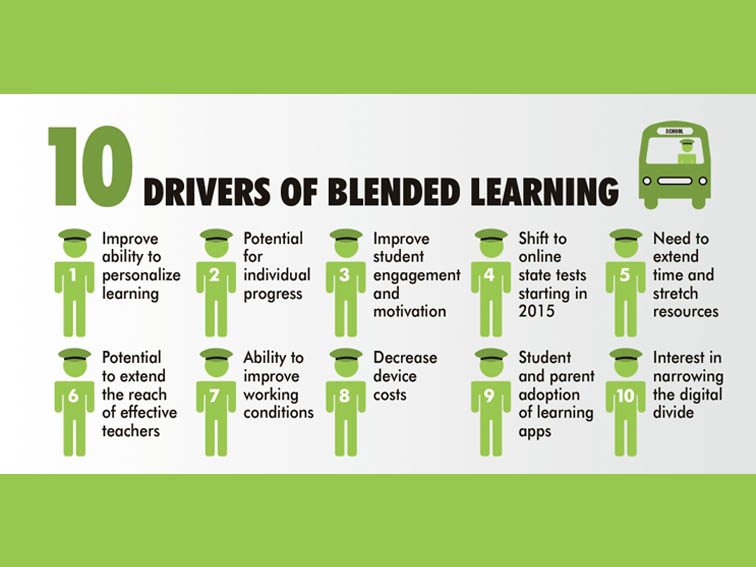
What Drives Blended Learning In Education?
Blended learning is the use of both face-to-face and eLearning approaches to deliver learning experiences (as opposed to direct instruction).
Whether you’re mixing a formal learning management system with in-person lectures, or a flipped approach that combines YouTube videos with in-class group work and individual instruction, these are all examples of blended learning.
The infographic below from the good folks at Digital Learning Now offers a basic framework for implementing blended learning (Create conditions for success, Plan, Implement, Improve), and then interestingly offers to “drivers” of blended learning, including online state testing, cost, and the critical ability to personalize learning.
10 Drivers Of Blended Learning In Education
1. Improve ability to personalize learning
2. Potential for individual progress
3. Improve student engagement and motivation
4. Shift to online state tests starting 2015
5. Need to extend time and stretch resources
6. Potential to extend the reach of effective teachers
7. Ability to improve working conditions (presumably of educators)
8. Decrease device costs
9. Student and parent adoption of learning apps
10. Interest in narrowing the digital divide

